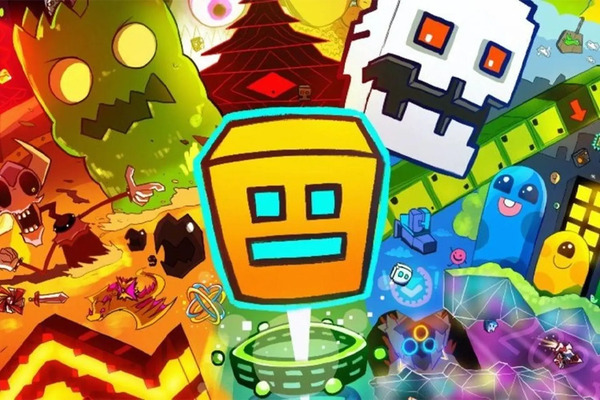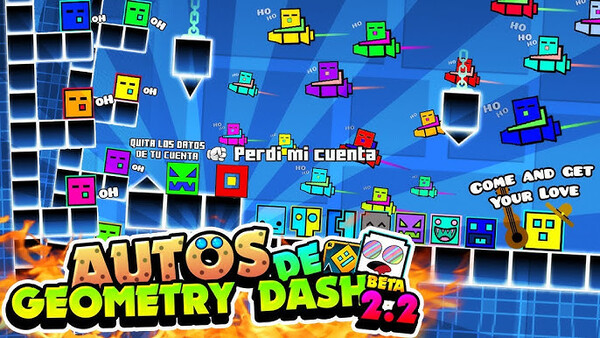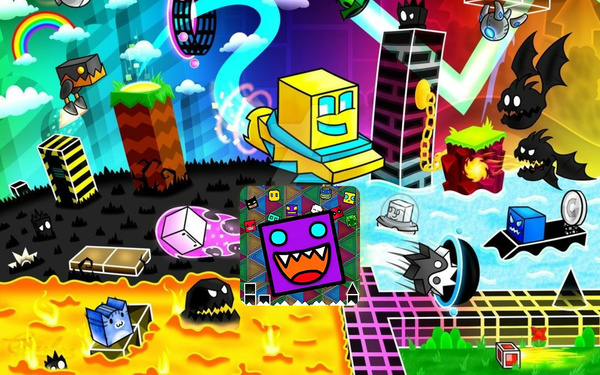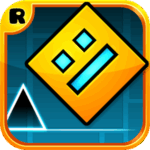Popular Now
Geometry Dash is one of the most iconic rhythm-based platformers in the gaming world. It challenges players with fast-paced gameplay, intricate level designs, and an electrifying soundtrack. While its one-touch control system may seem simple, it hides a steep difficulty curve that rewards precision, timing, and persistence. This guide is designed for players at every stage—whether you're just getting started or preparing to beat your first Demon level. Let’s explore the complete path to mastering Geometry Dash, step by step.
1. Getting Started: Understanding the Basics
Learn the Controls and Game Modes
Geometry Dash uses a simple tap or click mechanic to make your icon jump. Despite its simplicity, the game introduces multiple modes, each with unique controls:
-
Cube: The default mode, tap to jump over spikes and gaps.
-
Ship: Tap to fly upward, release to descend.
-
Ball: Changes gravity each time you tap.
-
UFO: Taps make mini jumps in mid-air.
-
Wave: Tapping creates a zig-zag flight path.
-
Robot: Jump height varies depending on how long you tap.
-
Spider: Instant gravity flip with each tap.
Understanding these different mechanics is crucial because most levels incorporate several modes in rapid succession.
Start with the Official Levels
The best way to start is with the official levels provided by the game, such as "Stereo Madness" and "Back on Track." These levels introduce new elements gradually and allow you to get comfortable with the gameplay. Don’t rush through them—each one teaches critical skills you’ll need later.

2. Practicing with Purpose: How to Use Practice Mode
Mastering the Checkpoint System
Practice Mode is your best tool for improvement. It allows you to place checkpoints wherever you like, so you can practice challenging sections without restarting the entire level. Use this feature generously when facing a new or tough level.
When and How to Use Practice Mode Efficiently
Start by attempting a level in normal mode to get a feel for it. Then, switch to practice mode to tackle specific problem areas. Once you've mastered individual segments, return to normal mode to string your progress together. This strategic approach saves time and builds confidence.
3. Building Muscle Memory
Why Repetition is the Key
The secret to success in Geometry Dash is muscle memory. The more you play a level, the more your fingers will remember the rhythm and movements required. This automatic response is what separates skilled players from beginners.
Focus on Sections, Not Full Levels
Rather than replaying an entire level from start to finish, focus on mastering one segment at a time. Use practice mode to isolate difficult parts and repeat them until they become second nature. Once you're comfortable with all segments, put them together for a full run.
4. Reading the Rhythm: Syncing with the Music
Music is More Than Background
Every Geometry Dash level is closely tied to its music track. The beats often align with jumps, spikes, and transitions. By syncing your taps with the music, you can anticipate movements even before you see the obstacles.

Use Headphones and Play Louder
Sound clarity is essential. Use headphones or turn up the volume to catch subtle audio cues that indicate when to jump or shift. A strong audio connection can significantly boost your timing and accuracy.
5. Progressing to Harder Levels
From Easy to Demon
As you grow more confident, gradually take on higher-difficulty levels. The categories range from Easy to Demon, with "Insane" and "Harder" serving as intermediate challenges. Avoid skipping difficulties—it’s essential to build skills gradually.
Suggested progression path:
-
Easy
-
Normal
-
Hard
-
Harder
-
Insane
-
Demon
Try User-Created Levels
Geometry Dash’s community has built thousands of custom levels. Many of these are featured or rated by difficulty. Play user-created levels that match your skill level for more practice and variety. They’re also a great way to prepare for Demon-level challenges.
6. Understanding Advanced Mechanics
Portals, Pads, and Orbs
As levels become more advanced, they introduce complex elements:
-
Jump Pads: Automatically bounce your character.
-
Jump Orbs: Require a tap to activate a jump.
-
Gravity Portals: Flip the gravity of the level.
-
Speed Portals: Change the speed of gameplay.
Each of these items interacts with your movement in specific ways, and understanding them is essential for navigating more complex levels.
Combining Multiple Mechanics
Later levels combine these mechanics simultaneously. For example, you may hit a jump pad while passing through a gravity portal at double speed. This creates intricate patterns that you must learn to recognize and respond to instantly.

7. Overcoming Frustration and Staying Motivated
The Mental Side of Geometry Dash
Frustration is inevitable. You’ll die at 98% progress or fail repeatedly at the same point. The key is to maintain a learning mindset. Each mistake reveals something new about the level. Use it as data, not discouragement.
Celebrate Small Wins
Even minor improvements—like getting past a previously troublesome section—are victories. Set micro-goals: mastering a jump, reaching a new percentage, or reducing your number of fails. These wins help maintain motivation through difficult levels.
8. Customizing Your Experience
Character Skins and Icons
Unlock new icons, colors, and effects by completing levels and achievements. Customizing your character adds a layer of fun and personality to the game. It also gives you long-term goals beyond just completing levels.
Creating and Sharing Levels
The built-in level editor allows you to design and share your own levels. Experimenting with level creation gives you insight into game design and helps you understand the challenges from a creator’s perspective.
9. Watching and Learning from Others
YouTube and Streamers
Many skilled players share gameplay footage, tutorials, and level walkthroughs on YouTube. Watching these can offer insights into timing, patterns, and shortcuts.
Recommended content creators:
-
Trusta
-
Viprin
-
Technical
-
EricVanWilderman (EVW)
Join Online Communities
Forums, Discord servers, and Reddit groups are filled with Geometry Dash fans. Join these communities to share your progress, get advice, and discover new levels. Engaging with others helps you stay motivated and continuously improve.

10. Going Pro: Beating Demon Levels and Beyond
Preparation and Strategy
Demon levels are the ultimate test of your skills. Begin with easier ones like "The Lightning Road" or "The Nightmare." These levels offer a manageable introduction to the Demon tier.
Once you’re ready, gradually work up to harder levels like "Clubstep," "Bloodbath," or "Tartarus." Break each level into sections, memorize the patterns, and practice until they’re instinctive.
Maintain Balance and Avoid Burnout
Playing for hours without progress can lead to burnout. Take regular breaks, mix challenging runs with easier ones, and celebrate your progress—even if it’s small. Mastery comes with time, so keep the game fun and rewarding.
Conclusion
Geometry Dash is a game of rhythm, reflexes, and relentless determination. It starts with a simple jump mechanic but quickly transforms into a test of precision and patience. With practice, strategy, and a bit of creativity, any player can go from a casual tapper to a Demon-level conqueror. Whether you're diving into your first level or pushing for the hardest achievements, remember: every jump counts, every fail teaches, and every success is earned. Now jump in and ride the rhythm to victory!


















